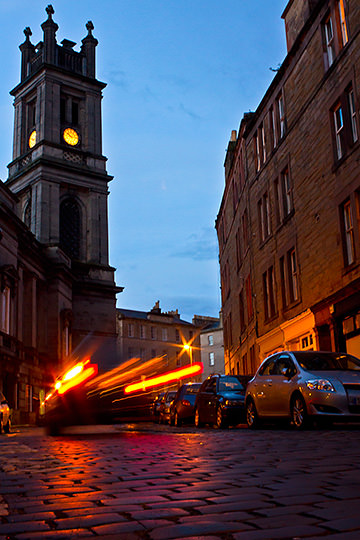Light trail photography has a way of creating unique photographs. It is a slow shutter speed capture of moving lights, often from travelling cars. Just as how no two cars would take the same road in the same way, no two light trails are the same, which only makes it fun to experiment and play around with - and that’s what photography is all about. (Report by Isaiah Tan)

First up, here's the equipment you will need:
- A tripod to hold the camera steady.
- A shutter release to prevent camera shake. You can set a two second shutter delay if you do not have one, but a shutter release enables you to shoot consistently in BULB mode.
- An ND filter to extend the exposure time. The longer the exposure, the more light trails you will capture.
- A wide angle lens is recommended as you will be shooting mostly landscape style shots.
1. Shutter speed priority
Set your camera to Shutter Speed Priority and experiment with the scene. A good shutter speed should be 20 seconds and above, though it isn't a hard and fast rule. Be flexible in setting your shutter speed, depending on the subject and the ambient lighting.
BULB mode is another option which allows you to control exactly when the exposure stops. This is very useful for timing the shot in sync with passing cars.

An example of an effective light trail photo that does not need to be 20 seconds long.
2. ISO
Set ISO to 100 to reduce noise and grain, ensuring a high quality long exposure.
3. Shoot at a low angle
Many photographers love to take high angle light trails to get an overview of the area. However, a camera at a low angle results in more light flares and varied trails, which add to the uniqueness. The foreground also adds depth to the composition.
4. Expose & Photoshop
Always expose several images at each scene without moving the camera. If you’re a Photoshop guru, you could layer images to mix in the best light trails from each photograph. You could also mix HDR photography to accurately expose all areas of the photograph, then blend it all together.
5. Use a flash
Incorporating light trails could also make for impressive portraits with a flash handy. Set your flash mode to Rear Curtain and place your subject at a busy road intersection, a brightly lit Ferris Wheel or a background of fireworks. Ask the subject to step into the frame near the end of the exposure. At the end of the exposure, the flash will fire, resulting in a portrait with an astounding background.

Exposed for 66 seconds at f/22 with a circular polarizer to further reduce the light for a longer exposure.

A professional videographer with a love for photography, Isaiah runs a video production company, a wedding video/photo business, as well as a small bar in Singapore. He enjoys experimenting with different photographic techniques and always wants to learn and discover more of the world around him.

































